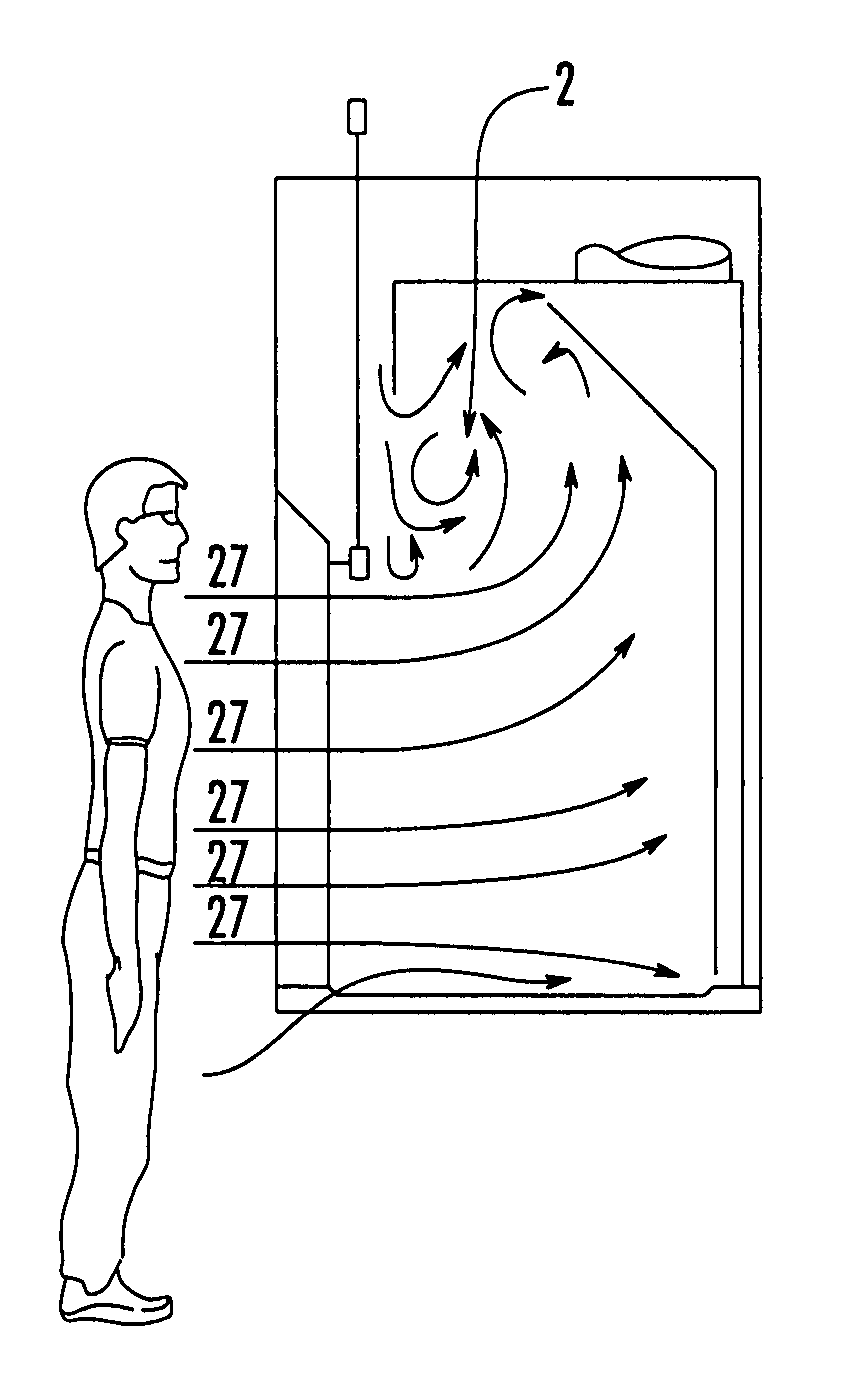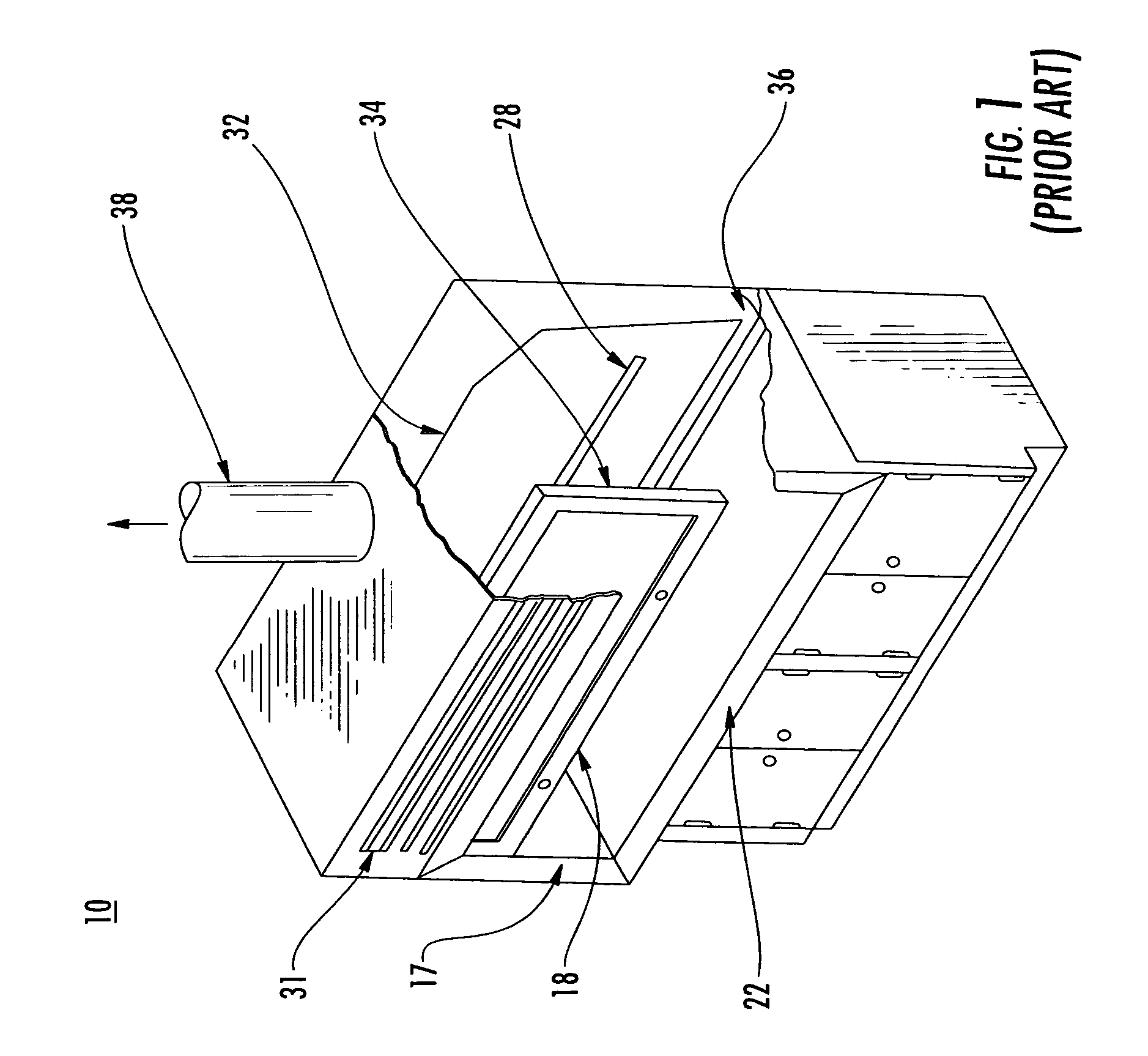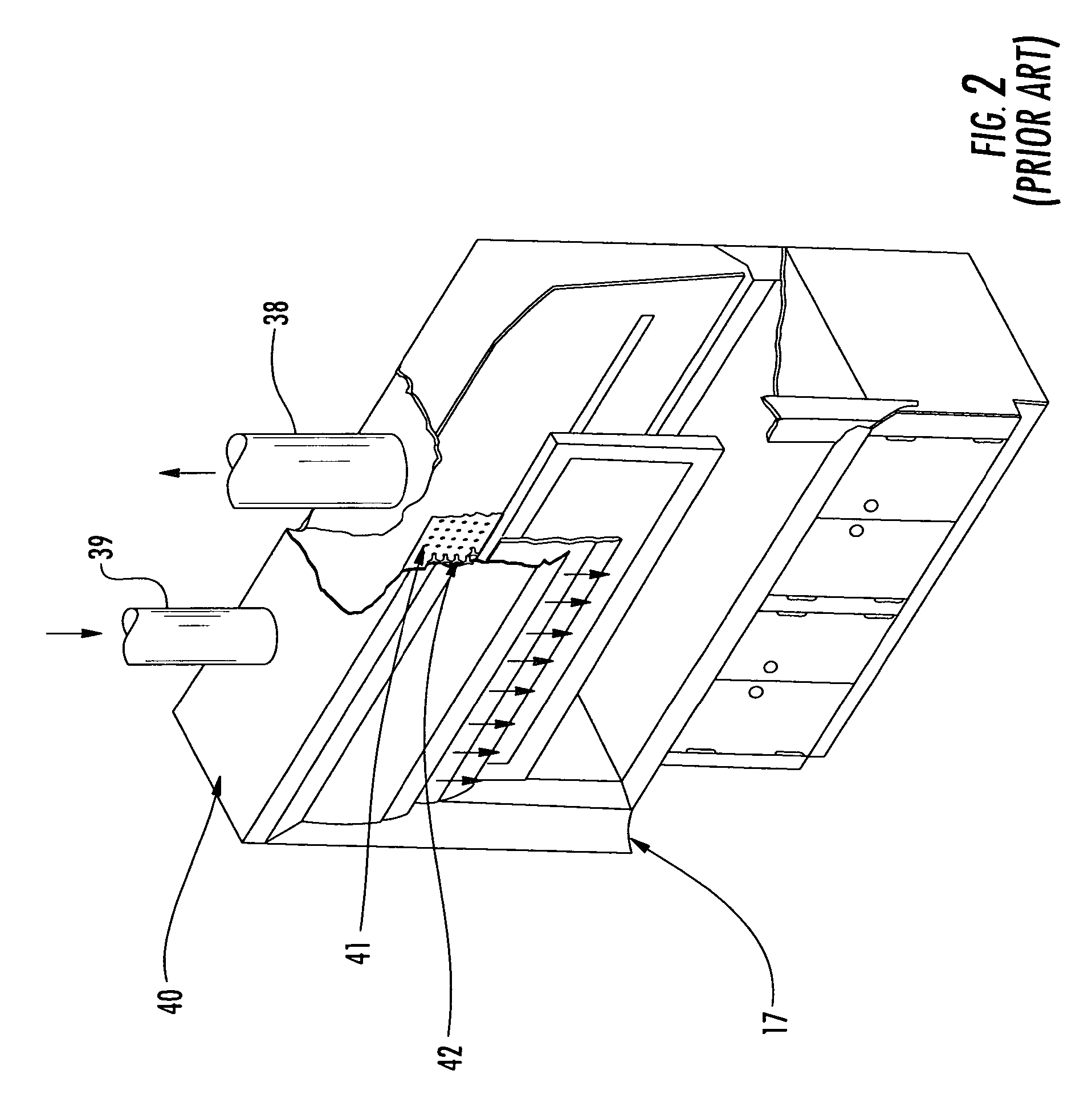Converting existing prior art fume hoods into high performance low airflow stable vortex fume hoods
a fume hood and vortex technology, applied in ventilation systems, heating types, stoves or ranges, etc., can solve the problems of high maintenance and high cost of duct mounted exhaust airflow volume controls, and achieve stable vortex hoods, reduce exhaust airflow, and high performance low airflow
- Summary
- Abstract
- Description
- Claims
- Application Information
AI Technical Summary
Benefits of technology
Problems solved by technology
Method used
Image
Examples
Embodiment Construction
Definitions:
[0057]Access Opening: That part of the fume hood through which work is performed; sash or face opening.
[0058]Actuable Baffle: A rear baffle system comprised of multiple dampers allowing for either manual or controlled transfer of a constant exhaust air volume by modulating slot opening and closing system
[0059]Airfoil: A horizontal member across the lower part of the fume hood sash opening. Shaped to provide a smooth airflow into the chamber across the work surface.
[0060]Baffle or Rear Baffle: Panel located across the rear wall of the fume hood chamber interior and directs the airflow through the fume chamber.
[0061]Balancing: In an air conditioning system is the process of measuring the as installed airflow values and making any adjustments to achieve the design intent.
[0062]Bypass: Compensating opening in a fume hood to limit the maximum air flow passing through the access opening and or vortex chamber.
[0063]Combination Sash: A fume hood sash with a framed member that mo...
PUM
 Login to View More
Login to View More Abstract
Description
Claims
Application Information
 Login to View More
Login to View More - R&D
- Intellectual Property
- Life Sciences
- Materials
- Tech Scout
- Unparalleled Data Quality
- Higher Quality Content
- 60% Fewer Hallucinations
Browse by: Latest US Patents, China's latest patents, Technical Efficacy Thesaurus, Application Domain, Technology Topic, Popular Technical Reports.
© 2025 PatSnap. All rights reserved.Legal|Privacy policy|Modern Slavery Act Transparency Statement|Sitemap|About US| Contact US: help@patsnap.com



